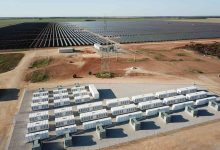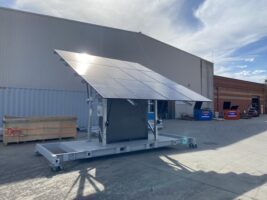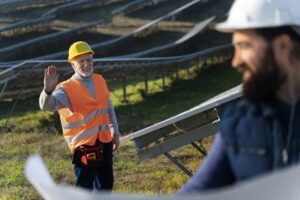Ballarat might be the first regional Australian city to go fully renewable, building on a plan first outlined in October last year to harness distributed energy resources.
The newly-founded Ballarat Energy Network (BEN) is bringing in large energy consumers in the town alongside AusNet Services and Mondo to figure out how to create a behind-the-meter network that can locally generate, share and use renewable power before exporting any excess to the broader grid.
Over the next year BEN and the participating companies will analyse the energy assets and potential in and around the Ballarat West Employment Zone (BWEZ), says BEN chair Bill Mundo.
“This project is the preliminary work that we need to do before we get to the position of 100 per cent renewables,” he says.
“It’s the very first steps of mapping, in a discrete area for those commercial and industrial businesses, what their energy usage looks like, how might we be able to leverage their properties in the surrounding areas for the generation of electricity, and what might the generation capabilities of all the business add up to and how might we leverage those.”
Those generation opportunities might be batteries, wind, solar or even biowaste.
The final report would likely be finished in early 2025.
From there the next steps will be negotiating with companies in the BWEZ to shift them towards renewables generation, considering whether any National Energy Market rule changes will be needed to create a behind-the-meter network for a single business area, and begin talks about how to make this work for a whole town.
Ballarat isn’t the first town in Australia wanting to set up its own generation assets behind-the-meter.
Tyalgum in New South Wales wanted to establish its own battery and generation hub in 2015, but that project does not appear to reached completion.
Yackandandah is installing a community battery to hook into a local micro-grid, while Coober Pedy is already on a largely renewables-powered microgrid.
In Ballarat, distributed renewable resources already in the area of rooftop solar and wind power could be better shared among the local community, says Committee for Ballarat CEO Michael Poulton.
“If we share local energy generation using smart metering and flexible management, store it for when needed and trade the excess, we will create a new decentralised network model,” he says.
“Decentralised networks are based on local generation and distribution and will help deliver lower costs to local consumers, strengthen energy resilience within our community and reduce our carbon emissions.
Ballarat is home to some big energy consumers in McCain Foods, Haymes Paint, Grampians Health Services, MaxiTRANS, Bartletts, Luv-a-Duck, and UGL.
It is also the site of Victoria’s first big battery.
The Committee for Ballarat which is behind the BEN, some 20 of Ballarat’s largest businesses and industries, and Ausnet Services and Mondo, are looking at how to use commercial and industrial, and household generation, to power the town.










